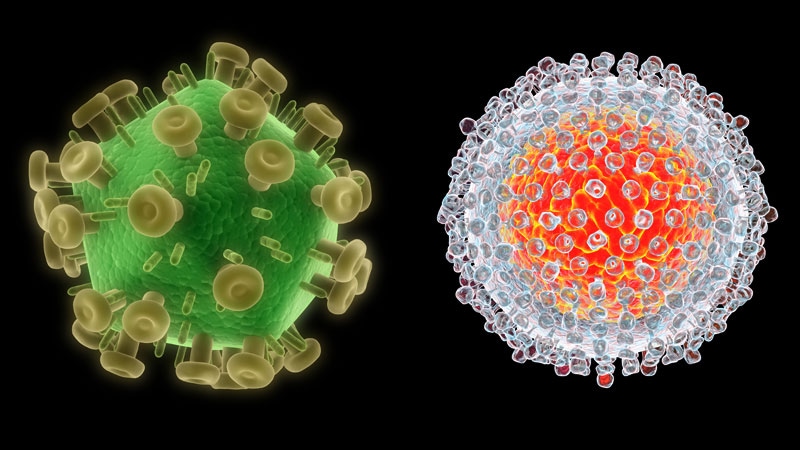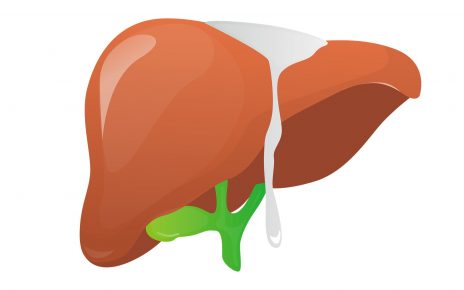Patients treated with direct-acting antivirals (DAAs) for hepatitis C virus (HCV) and antiretrovirals (ARVs) for HIV rarely receive drug combinations that are contraindicated, according to real-world data from the EuroSIDA study.
Modern DAA therapy has high HCV cure rates, including in people co-infected with HIV, who can be treated with the same DAAs as those with HCV monoinfection, the authors write.
But potential drug-drug interactions between HCV and HIV medications and other drugs need to be considered before starting DAA therapy.
“In this large heterogenous European cohort, more than one-third of people with HIV/HCV coinfection received DAAs with potential ARV contraindications, but few received a contraindicated ARV,” lead study author Myroslava Nikolaichuk, MD, PhD, assistant professor in the Department of the Infectious Diseases of Dnipro State Medical University in Ukraine, and colleagues write in HIV Medicine.
“Use of contraindicated ARVs declined over time, corresponding to the increased availability of ARV therapy regimens without interactions with DAA across Europe,” they add. Participants who received a contraindicated DAA and ARV combination still had a high rate of sustained HCV virologic response 12 weeks after end of DAA therapy, they found.
Nikolaichuk and her colleagues investigated whether ARVs were used according to European AIDS Clinical Society (EACS) Guidelines for people coinfected with HIV and HCV.
They analyzed data from the EuroSIDA observational study of more than 23,000 people living with HIV in 35 European countries, Israel, and Argentina, from November 2014 — when interferon-free DAA treatment became widely used across Europe — through December 2019.
A total of 1691 adults with HCV/HIV co-infection received interferon-free DAAs. The researchers analyzed data from the 1406 (83%) who received concomitant ARVs. Overall, 76% were from Western Europe, 89% were White, and 75% were male.
At the baseline visit — the first date on which a DAA was received — median participant age was 51 years, and 57% reported injecting drugs. Overall, 52% had HCV genotype 1, and 20% had cirrhosis.
At baseline, and at 3 and 6 months after each of the annually updated guidelines publication date, the researchers calculated the number of people receiving DAAs where the DAA should not have been co-administered with specific ARVs. Of the total number of persons with potential ARV contraindications, they calculated the number who had received a contraindicated ARV.
Of the 1624 HCV treatment episodes, 609 (37.5%) occurred while the patient was receiving an ARV with potential contraindications, but only 38 (6.2%; 95% CI, 4.3%-8.2%) involved a contraindicated ARV. Among the 38 treatment episodes with a contraindicated DAA/ARV combination, 18 contained a non-nucleoside reverse transcriptase inhibitor, 16 contained a protease inhibitor, and four contained integrase strand transfer inhibitors.
The proportion of patients treated with DAAs with potential ARV contraindications increased over time, but contraindicated combinations comprised only three of 146 (2.1%) of those treatments provided after the 2018 guidelines were published. Further study findings were:
-
The adjusted odds of receiving a contraindicated ARV were higher (3.25; 95% CI, 1.40-7.57) in participants from Eastern and central Eastern Europe compared with those from the south.
-
The adjusted odds of receiving a contraindicated ARV were lower (0.22; 95% CI, 0.08-0.65) for the 2015-2018 guidelines than for the 2014 version.
-
Overall, 29 (90.6%) of the 32 patients receiving a contraindicated ARV, and 441 (95.7%) of the 461 with potential ARV contraindications showed sustained virological response 12 weeks or more after stopping treatment.
‘Treating HCV Co-infection Is Feasible, Safe, and Successful’
H. Nina Kim, MD, MSc, infectious disease specialist at the University of Washington School of Medicine and director of the Translational Research Subcore at the University of Washington/Fred Hutch Center for AIDS Research in Seattle, called this study important and welcomed its findings.

H. Nina Kim, MD, MSc
“In one of the largest cohort studies of people with HCV/HIV coinfection, not only were the DAA/ART drug interactions relatively rare (especially with the more widespread use of integrase inhibitors and updates in the treatment guidelines), but even in patients who did receive contraindicated combos, there was no evidence of early treatment discontinuation or higher rate of treatment failure,” Kim, who was not involved in the study, told Medscape Medical News in an email.
“This should assure clinicians that HCV treatment can be accomplished in just about everyone,” she added. “We have a cure for HCV, and there are not many chronic viral infections we can cure.”
Most clinicians treating HCV in patients with HIV are trained to be careful about drug interactions and have access to online resources to help them detect and manage interactions, she said.
“People with HCV and HIV are at increased risk for liver disease progression. Treatment of their HCV with DAAs is a high priority,” she said. “The ultimate challenge with HCV treatment is not the treatment itself but getting patients to engage in care and getting providers to prioritize HCV clearance, particularly in those with HIV who are at risk of accelerated disease,” she said.
“Treating HCV coinfection in people with HIV is feasible, safe, and successful, and potential drug interactions should never be a barrier to HCV treatment,” Kim advised.
Paolo V. Troia-Cancio, MD, FAACP, clinical professor in the Division of Infectious Diseases at UC Davis Health in Sacramento, California, who also was not involved in the study, noted that many drug interactions are complex and can be daunting, even for experienced clinicians.
“HCV protease-based regimens tend to have more interactions, although caution is still needed when prescribing non–PI [protease inhibitor]-based HCV regimens,” he said in an email, “and a careful review of drug-drug interactions is indicated for all DAA regimens.
“This study will help raise awareness of the importance of checking for drug-drug interactions,” Troia-Cancio added. “We need to always double-check for drug interactions when starting any new treatment for our HIV-infected patients, particularly when getting familiarized with newer treatment options.”
“This becomes particularly important when primary care providers, who may not be as familiar with HIV antiviral drug metabolism, are expected to treat greater numbers of HCV patients,” he concluded.
Three authors and Troia-Cancio report financial relationships with pharmaceutical companies. Nikolaichuk, most co-authors, and Kim report no relevant financial relationships. Nikolaichuk is supported by the EACS Career Development Fellowship.
EuroSIDA reports relevant financial relationships with pharmaceutical companies. The study was also supported by the Swiss National Science Foundation, the Danish National Research Foundation, and the International Cohort Consortium of Infectious Disease.
HIV Med. Published online August 8, 2022. Full text
For more news, follow Medscape on Facebook, Twitter, Instagram, and YouTube
Source: Read Full Article



